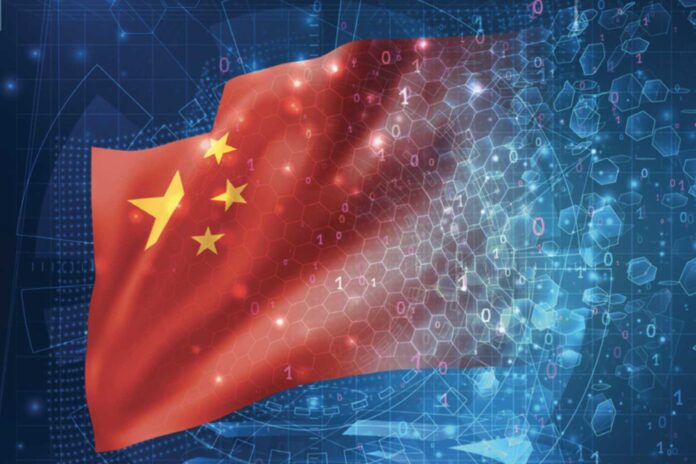With the onset of winter in the Himalayas, the Indian Army is making preparations for the possibility of some ‘winter action’ along the border with China. Indian and Chinese troops are locked in a dangerous face-off in Ladakh, India that started in 2020 when the People’s Liberation Army of China intruded into Indian Territory, leading to an unprecedented deterioration of the bilateral relationship. With the world already witnessing unprecedented war in Europe and in the Middle East, the outbreak of any new hostilities on the Indo-China border will be devastating on a global scale.
In this backdrop, the United States Department of Defense has released its Annual Report on China (2023) to the US Congress on 19 October 2023. This report is an important resource for India, as it provides crucial insights into the behavior and strategy of the Chinese state. The report gains further importance after Chinese President Xi Jinping removed China’s Defence Minister, General Li Shangfu on 24 October 2023. Understanding China’s strategy is the need of the hour, if peace is to prevail at the Indo-China border.
CHINA’S NATIONAL STRATEGY
China’s national strategy is to achieve “the great rejuvenation of the Chinese nation” by 2049. The strategy is a determined pursuit of political, social, and military modernity to expand the China’s national power, perfect its governance, and revise the international order in support of the Chinese system of governance and national interests. China currently views the United States as deploying a whole-of-government effort meant to contain China’s rise, which presents obstacles to its national strategy.
China characterizes its view of strategic competition in terms of a rivalry among powerful nations, as well as a clash of opposing ideological systems. China’s leaders believe that structural changes in the international system and a confrontational United States are the root causes of intensifying strategic competition between China and the United States.
In March 2023, Xi Jinping told delegates to the Chinese People’s Political Consultative Conference that “Western countries led by the United States have implemented comprehensive containment, encirclement and suppression against us, bringing unprecedented severe challenges to our country’s development.”
China’s strategy entails deliberate and determined efforts to amass, improve, and harness the internal and external elements of national power that will place the country in a “leading position” in an enduring competition between systems.
FOREIGN POLICY
China’s foreign policy seeks to build a “community of common destiny” that supports its strategy to realize “the great rejuvenation of the Chinese nation.” China’s ambition to reshape the international order derives from the objectives of its national strategy and the Party’s political and governing systems.
Beginning late 2022 Beijing launched a diplomatic ‘charm offensive’ targeting European countries in an apparent effort to improve perceptions of Beijing following years of ‘wolf warrior’ diplomacy and COVID isolation.
Russia’s war on Ukraine in February 2022 represented a major, unexpected challenge for China as it sought to react to the largest military conflict in Europe since the end of World War II. As Beijing deliberates the scale and scope of material commitments to Russia’s war on Ukraine, it probably will seek to balance its strategic partnership with Russia while avoiding reputational or economic costs that could result from its assistance.
ECONOMIC POLICY
At the end of 2022, China abruptly reversed its zero-COVID policy. The decision to implement China’s reopening took most by surprise and was probably triggered by countrywide protests against China’s zero-COVID policies, economic pressures, and fiscal difficulties for local governments.
The 20th Party Congress emphasized the importance of quality growth rather than the speed of growth. President Xi also highlighted “common prosperity,” more equitable access to basic public services, a better multitiered social security system, and cultural and green developments as a few of China’s economic initiatives.
China’s ongoing military modernization objectives are commensurate with and part of China’s broader national development aspirations.
CHINA’S BELT AND ROAD INITIATIVE (BRI)
China uses BRI to support its strategy of national rejuvenation by seeking to expand global transportation and trade linkages to support its development and deepen its economic integration with nations along its periphery and beyond.
In 2022, BRI projects saw mixed economic outcomes, experiencing both growth and decline. However, over- all spending on BRI projects remained consistent with the previous year and Beijing continued to prioritize public health, digital infrastructure, and green energy opportunities.
Overseas development and security interests under BRI will drive China towards expanding its overseas security relationships and presence to protect those interests.
MILITARY-CIVIL FUSION (MCF) DEVELOPMENT STRATEGY
China pursues its Military-Civil Fusion (MCF) (军 民融合) Development Strategy to “fuse” its security and development strategies into its Integrated National Strategic System and Capabilities in support of China’s national rejuvenation goals.
China’s MCF strategy includes objectives to develop and acquire advanced dual-use technology for military purposes and deepen reform of the national defense science and technology industries and serves a broader purpose to strengthen all of China’s instruments of national power.
Since early 2022, China appears to have been deemphasizing the term “Military Civil Fusion” in public, in favor of “integrated national strategic systems and capabilities.”
DEFENSE POLICY AND MILITARY STRATEGY
In 2022, China’s stated defense policy remained oriented toward safeguarding its sovereignty, security, and development interests, while emphasizing a greater global role for itself. The PRC’s military strategy remains based on the concept of “active defense” (积极防 御).
China’s leaders stress the imperative of strengthening the PLA into a “world-class” military by the end of 2049 as an essential element of its strategy to rejuvenate China into a “great modern socialist country.”
In October 2022, President Xi secured his third term as the general secretary of the Communist Party of China (CCP) at the Party Congress and his appointment of loyalists to top positions in the Central Military Commission (CMC) probably will enable Xi to expand upon military modernization and operational goals during his next 5-year term.
During his October 2022 speech at the opening ceremony of the 20th Party Congress, Xi reaffirmed his commitment to the People’s Liberation Army’s (PRC) 2027 milestone for modernization to accelerate the integrated development of mechanization, informatization, and intelligentization of the PRC’s armed forces. If realized, this capability milestone could give the PLA the capacity to be a more credible military tool for the CCP’s Taiwan unification efforts.
In 2022, the PLA continued discussing a new “core operational concept,” called “Multi-Domain Precision Warfare (多域精确战)” (MDPW). MDPW is intended to leverage a C4ISR network (command, control, communications, computers [C4] Intelligence, Surveillance and Reconnaissance [ISR]) that incorporates advances in big data and artificial intelligence to rapidly identify key vulnerabilities in adversaries operational system and then combine joint forces across domains to launch precision strikes against those vulnerabilities.
NUCLEAR CAPABILITIES
In 2022, Beijing continued its rapid nuclear expansion, and the U.S. Department of Defence has estimated that China possesses more than 500 operational nuclear warheads as of May 2023.
It is estimated that China will probably have over 1,000 operational nuclear warheads by 2030, much of which will be deployed at higher readiness levels and will continue growing its force to 2035 in line with its goal of ensuring PLA modernization is “basically complete” that year, which serves as an important milestone on the road to President Xi’s goal of a “world class” military by 2049.
Understanding these tenets of China’s national strategy is essential to understanding the drivers of China’s security and military strategy. This, in turn, offers insights on the current and future course of the People’s Liberation Army’s (PLA) strategy and tactics viz India in Ladakh, where things can turn ‘hot’ any moment.
From an Indian security point of view, this report is invaluable in its insights on China and what the future of the Indo-China relationship maybe.










